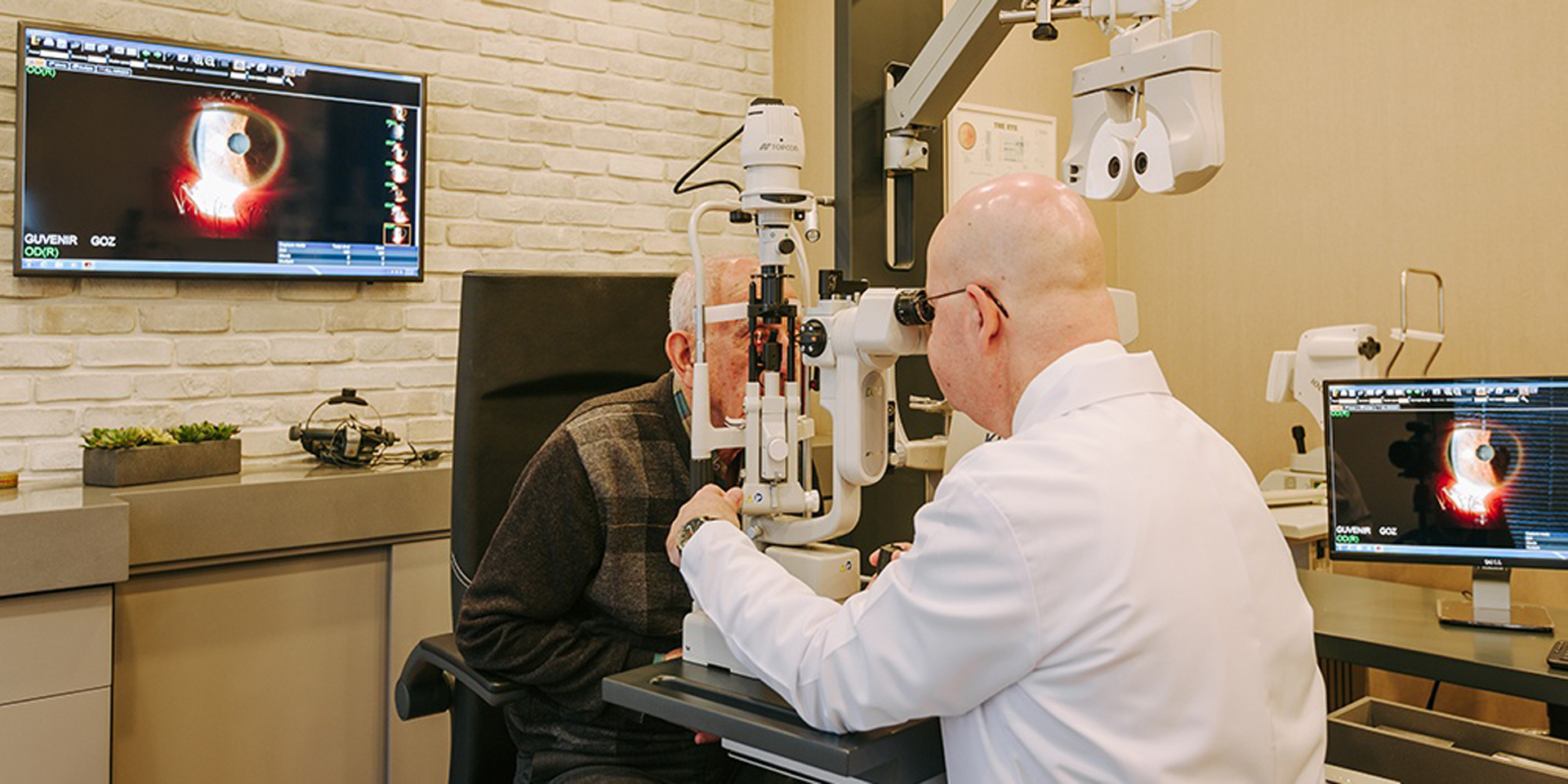Cataract is the opasification of the natural lens which focuses the light to the retina. When cataract develops, the light rays can’t be focused properly resulting in blurry vision. The main causes of cataract are , age (common after the age of 60 ) , trauma, heredity , and too much exposure to sunlight(uv radiation). Cataract can also develop after some eye diseases (such as uveitis) and after using some drugs such as steroids . Also , it can develop in diabetics at an earlier age .
Cataract is the opasification of the natural lens which focuses the light to the retina. When cataract develops, the light rays can’t be focused properly resulting in blurry vision. The main causes of cataract are , age (common after the age of 60 ) , trauma, heredity , and too much exposure to sunlight(uv radiation). Cataract can also develop after some eye diseases (such as uveitis) and after using some drugs such as steroids . Also , it can develop in diabetics at an earlier age .
what are the symptoms of cataract ?
Painless gradual impairment of vision , double vision , fading of colours, glare and haloes around lights and, frequent changes in eyeglass prescription .
What is the treatment of cataract?
There is no scientifically proven medicine for the treatment of cataract . The only treatment is surgery(lens replacement). In the last decade, there have been great advances in technology . The phaco machines that we use today are much safer and faster than the previous ones .during the operation , the eye is anesthesized only with the drops(no needles) and the operation is pain free. The procedure takes around 15 minutes and no stitches are used. The cataract is removed with ultrasonic waves(phaco) and a new clear artificial hydrophobic acyrylic lens is implanted though a self sealing tiny (2.2 mm)incision.this new lens stays clear life-time. The patient can do normal everyday activities the next day .
What are the options of the artificial lenses that are implanted in terms of function and quality?
We use fda approved best quality lenses for many years. The material of these lenses are hydrofobic acrylic . This material is very soft plastic which enables us to fold and implant it though a small incision . The lens unfolds to it’s original size once delievered inside the eye. The estimation of lens power before the procedure is very important . With the adjustment of the power of the lens before the operation , the patient not only gets rid of the blurry vision , but also , gets rid of the previous refractive error as well. So ,the goal of the surgery is to give clear sight without glasses most of the time ,at all distances .
These lenses have mainly four types:
1: monofocal lenses: these are the ones that we have been using for many years . They are the most commonly used ones in the world. Since they only have one focal point , %100 of the light coming into the eye is used to be focused to the retina. So, the optical quality is the best in these lenses. However , since they only have one focal point, the lens power is adjusted either for far or near distance .if the adjusment is made for far distance, the patient has to use reading glasses after the operation . We recommend and make monovision technique to our patients who prefer these lenses. In this technique , the dominant eye is adjusted for distance and the non-dominant eye is adjusted for imtermediate distance(like computer screen) . In this way, the patient can see almost all distances without glasses in most of the time during the day .
2:toric lenses : these are the ones that we use in patients who have pre-existing astigmatism. These are the customised ones that we measure and order before the procedure. These intraocular lenses can either be monofocal or multifocal. So , the patients’ pre-existing astigmatism can be corrected this way.
3: trifocal lenses(premium lenses): the patient is able to see all distances without glasses. The development of multifocal intraocular lenses and the study of their properties ,including optic designs have revolutionised refractive lens surgery in the past few years . Patient selection for trifocal lenses should be performed carefully to achieve best outcomes for each individual .the latest developed models of these premium lenses provide better visual acuity at all distances , better contrast sensitivity and less halos and glare symptoms than the previous models of the multifocal lenses.
In some cases , far or near vision may not be optimal and the patient may need a weak presciption of glasses or secondary excimer laser enhancement treatment for better correction .
4: accomodating lenses: these lenses also, give best quality of vision in all distances . The disadvantage is that the ability of accomodation disappears in a few years’ time .they are still being developed .
What is the technology that we use for cataract removal ?
We use an optical biometer ( zeiss iol master ) for calculating the lens power before the operation. This device measures the lens power precisely in seconds without touching the eye. The phaco machine that we use during the operation is ‘alcon centurion’ which is the newest, most advanced technology . We also use the ‘ zeiss lumera’ operation microscope in a completely sterile operating environment .
